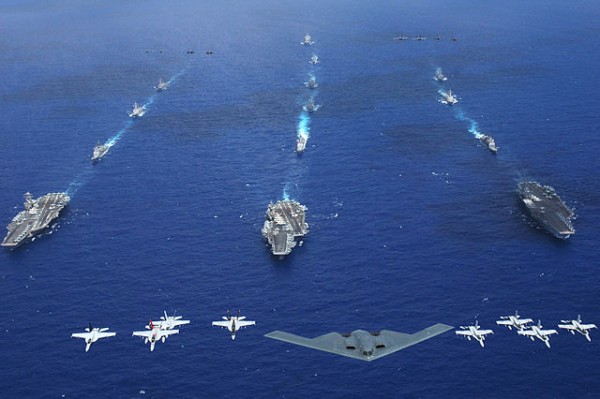
Extended deterrence entails a two-fold challenge: Dissuading hostile states from taking offensive action while also persuading allies that there is no need to bolster their security through nuclear proliferation. Washington spent a great deal of treasure and psychic energy during the Cold War coming to grips with these problems, mainly in Europe as it tried to reassure NATO countries that America had their back even as Soviet nuclear forces grew in size and capacity. To a much lesser extent the problems of extended deterrence were also at work in East Asia during the Cold War. But they are now cropping up again as the regional security order becomes more complex.
This can be seen most clearly in the drama now playing out with North Korea. The United States has responded to Pyongyang’s increasing bellicosity in a way straight out of the Cold War playbook: 1.) by beefing up missile defense capabilities in Alaska; and 2.) sending nuclear-capable B-2 and B-52 bombers on practice runs over the Korean peninsula.
As illustrated in a Pentagon press conference following the bomber runs, the intended audience for these moves is not just Pyongyang. General Martin E. Dempsey, the chairman of the Joint Chiefs of Staff made a point of emphasizing:
The reaction to the B-2 that we’re most concerned about is not necessarily the reaction it might elicit in North Korea, but rather among our Japanese and Korean allies. Those exercises are mostly to assure our allies that they can count on us to be prepared and to help them deter conflict.
As the mission was being announced in an official statement, Defense Secretary Chuck Hagel was also on the phone with his South Korean counterpart, reaffirming the United States’ “unwavering” commitment to defend the South.
Regardless of how the current North Korean crisis ends or the Obama administration’s success in dealing with the broader credibility problems of its “Asia pivot,” Washington’s challenges with extended deterrence will only grow in the years ahead as nuclear proliferation expands in the region and what some (here and here) are calling the “Second Nuclear Age” takes more concrete shape.
FYI: For more detailed examinations of the problems of extended deterrence in an evolving East Asia, see here, here and here.
This commentary is cross-posted on Monsters Abroad. I invite you to connect with me via Facebook and Twitter.